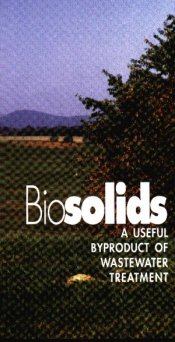
ENV 103 ENVIRONMENTAL HEALTH
Fall 1998
A TRIP TO THE BLUE PLAINS WATER TREAMENT CENTER
Washington, DC
November 4 and 18, 1998

A TRIP TO BLUE PLAINS WATER TREATMENT PLANT
Washington, DC
November 4 and November 18, 1998

The facility was opened in 1935 as a primary treatment plant. It served a population of 650,000 people at that time, with an estimate that the plant would be sufficient until 1950. It was expanded in 1946 as the area population grew, and now serves over 2 million people, and processes over 309 million gallons of wastewater daily. At the conclusion of treatment, the water is 98% free of contaminants. Now a tertiary treatment plant, Blue Plains is one of the largest advanced wastewater treatment facilities in the world.
Our trips were an abbreviated version of what is usually presented, as we had only an hour to tour the facility. Department employees served as lively, interested tour guides. They informed us that prior to any water treatment, cholera and hepatitis were common waterborne infections of the population. Primitive water treatment began in the 1850s, but modern treatment did not come into being until 1935. The plant processes domestic wastewater: homes, commercial establishments, and street runoff, which arrives via the 1800 miles of sewer lines in the area. No industrial effluents come into the system. The Government Printing Office and Bureau of Engraving do add their wastewater, but it is pre-treated before it exits these facilities.
After the introductory words, the bus approach the initial treatment area. Students were appalled at the odor, even inside the closed bus. As the area came into visual range, they were further shocked to see the water --- foaming, grimy, and loaded with objects that had been flushed down drains and toilets, or from street drains. Sea gulls constantly swooped down to scavenge. In these large tanks, bar screen swirled around at a slow rate, collecting these extraneous items and getting rid of them. "Grit" from sand and dirt is also caught and removed here.
As part of this primary treatment, the wastewater is allowed to settle, and the heavier organic solids sink to the bottom, where they are pumped out. Some of this material is used as "feeder" for the anaerobic bacteria necessary in the second stage of treatment. The rest of the settled material is removed and dehydrated.
The ENV 103 class once again was split in half to make this very interesting off-campus field trip. Blue Plains Water Treatment Plant is the tertiary water treatment facility serving the greater metropolitan Washington, DC area. The class traveled by bus to the facility.

Secondary treatment of the wastewater begins with the addition of aerobic bacteria, which feed on the remaining suspended particles. This stage is a biological stage, and is a very complicated one. Phosphorus is the main chemical being removed at this stage.
The tanks are aerated, with air being added to them. Chlorine gas and ferric chloride are added at this stage, to coagulate materials and control odor. The chlorine also helps kill pathogenic microorganisms. At the completion of this stage, up to 75% of solid materials have been removed.

Lime is added to the tanks during this stage, to adjust the pH level. In this process, ammonia is changed to nitrate. However, since nitrate is toxic to Chesapeake Bay, this substance must be further treated. This is done by adding methanobacteria (bacteria which utilize methane as a source of energy) to the water. These organisms, fueled by the sludge from the first step, break down the nitrates into gaseous nitrogen, which is released into the air. (Nitrates and phosphates stimulate the growth of algae [algae blooms] in the waters of Chesapeake Bay, which in turn harms aquatic life and vegetation.)
The water now reaches the third step of the process, completing the tertiary treatment that was started. After the water has been denitrified, it is moved into the final tanks, where the remaining fine particles are removed by filtration. The flow is forced to the tops of the tanks, and is fed slowly through a layer of sand, gravel and charcoal, into a chamber where it is once more treated with chlorine. This chlorine process removes up to 99.9% of the remaining microorganisms.
The chlorine is then removed by treatment with sulfur dioxide, and the water is finally ready for release into the Potomac River, where it once more is ready for use by people, animals and plants.
Students were amazed to learn that the biosolid byproducts of the process are used by local farmers and gardeners as fertilizer, thus showing another means of recycling our "garbage". Fish and birds utilize the tanks as water and food sources.
Once more, students wrote 1-2 page reports on their field trip experience, again using the questions from the previous trips. Although the smell and initial sights of Blue Plains initially repulsed just about everyone, by the end of the experience there was almost universal amazement at what was done at the facility in making horrible water reusable in less than 24 hours. Most reports expressed admiration for the work, and appreciation for the efforts that go into making such a simple thing as drinking water so important in our everyday lives.
For an eye-opening (and nose-closing!) experience, this trip was well worth the time and effort.


 Click here to go to the Field Trips Index Page!
Click here to go to the Field Trips Index Page!
 Click here to fly back to the Home Page!
Click here to fly back to the Home Page!